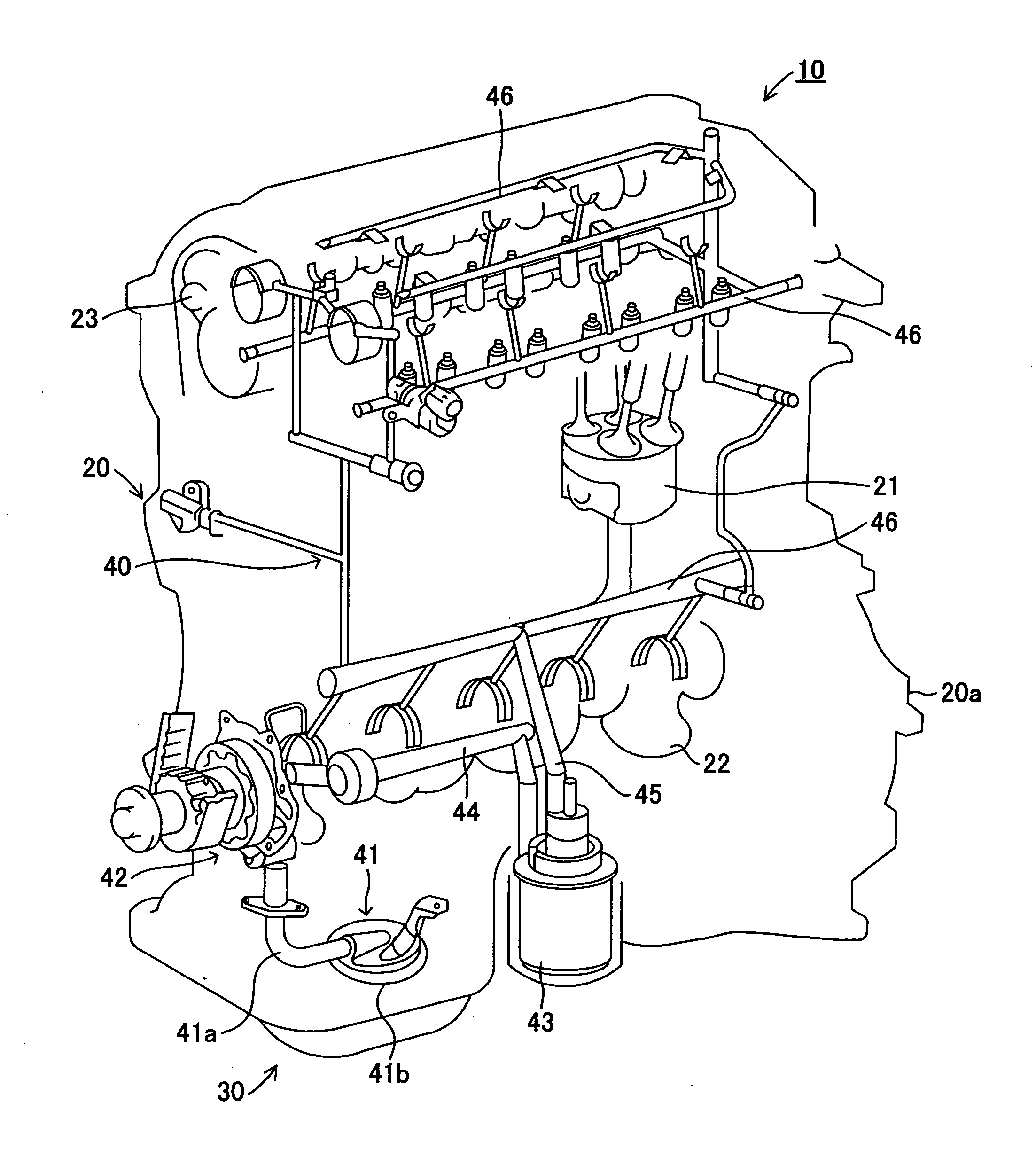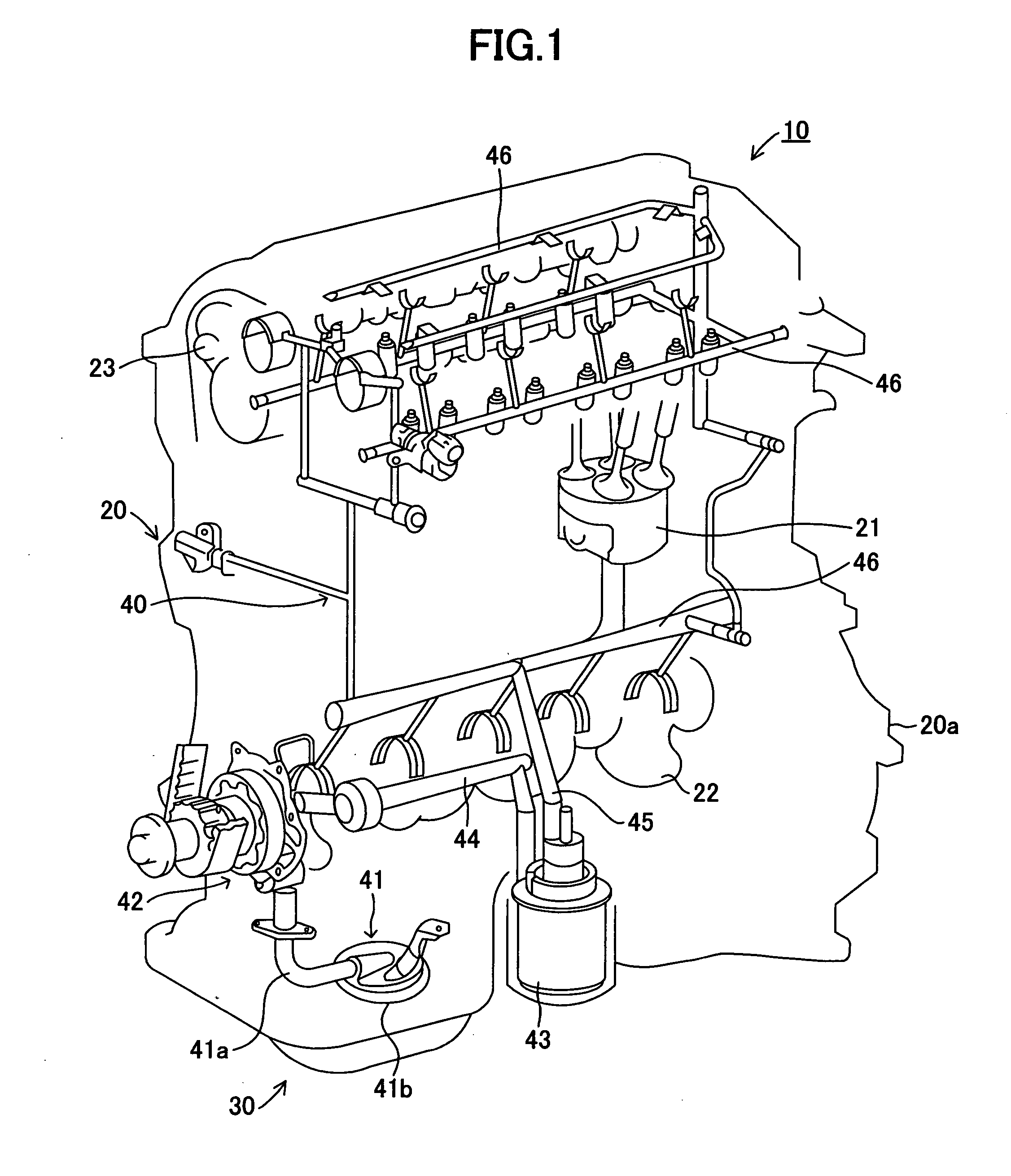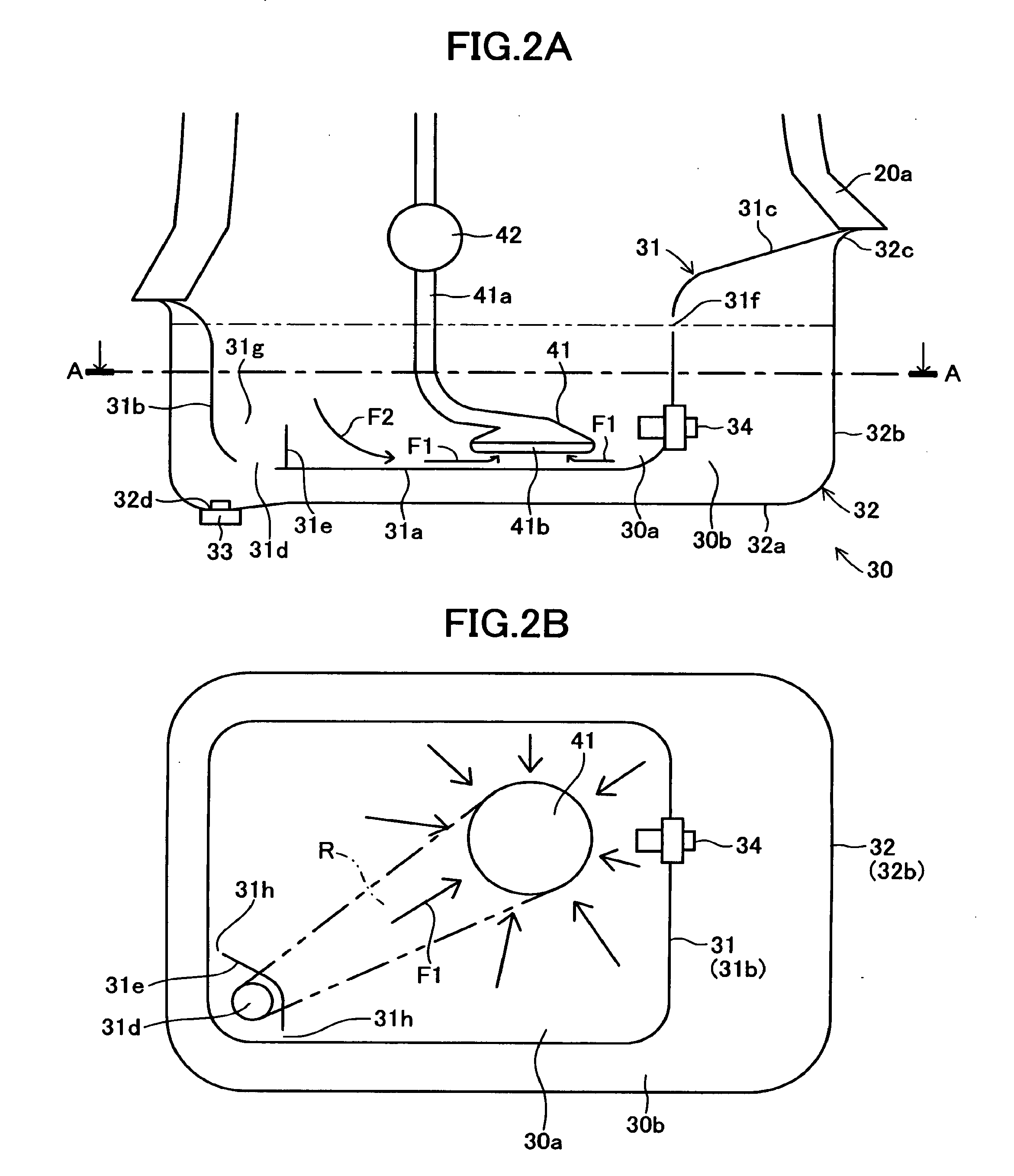Oil Pan and Lubricating Device
a technology of oil pan and lubricating device, which is applied in the direction of lubricant mounting/connection, valve operating means/releasing devices, machines/engines, etc., can solve the problems of slow oil movement difficult to outpour oil from the first chamber into the second chamber through the communication hole, etc., and achieves the effect of simple configuration
- Summary
- Abstract
- Description
- Claims
- Application Information
AI Technical Summary
Benefits of technology
Problems solved by technology
Method used
Image
Examples
first embodiment
Operation in First Embodiment
[0101]Next, the operation of the oil pan 30 and the lubricating system 40 in this embodiment provided with the above-mentioned configuration will be described.
[0102]When the operation of the engine 10 is started, vertical motion of the piston 21 based upon a cyclic motion of the internal combustion engine is converted to a rotational motion of the crankshaft 22, the oil pump 42 sucks oil stored in the first chamber 30a of the oil pan 30 from the suction opening 41b of the strainer 41 by the rotation of a rotor 42a of the oil pump 42 attached to the crankshaft 22, discharges and delivers the sucked oil to the oil transport pipe 44.
[0103]The oil pumped from the oil pump 42 into the oil transport pipe 44 is transported to the oil filter 43 through the oil transport pipe 44 and is filtered by the oil filter 43. The filtered oil is supplied to the oil delivery pipe 46 through the oil supply pipe 45 and is supplied to each moving part such as the piston 21, th...
second embodiment
[0114]FIG. 3 are schematic diagrams for explaining the configuration of a main part of an oil pan 130 in a second embodiment of the present invention, FIG. 3A is a side sectional view, and FIG. 3B is a sectional view viewed along a line B-B in FIG. 3A. The same reference numeral is allocated to an element having the similar action and function to the first embodiment and the description is omitted (also similar in another embodiments described later).
[0115]A communicating pipe for drain 35 as a tubular member is arranged in a lowest part of a bottom panel 31a of an oil pan separator 31 inside a first chamber 30a in the oil pan 130 in this embodiment. The communicating pipe for drain 35 is provided with a pipe base 35a forming a main part of the communicating pipe for drain 35 and a connection part 35b connected to one end of the pipe base 35a and provided so that the connection part vertically pierces the bottom panel 31a of the oil pan separator 31, and the pipe base and the connec...
third embodiment
[0120]FIG. 4 are side sectional views for explaining the configuration of a main part of an oil pan 230 in a third embodiment of the present invention.
[0121]A circular communicating hole for drain 31d is formed in a lowest part of a bottom panel 31a of an oil pan separator 31 in the oil pan 230 in this embodiment. A float valve for drain 36 that can close the communicating hole for drain 31d from the downside is arranged in the oil pan 230.
[0122]The float valve for drain 36 is configured by a base 36a arranged immediately under the communicating hole for drain 31d, a stopper part 36b arranged on the upside of the base 36a and a coupling part 36c that couples the base 36a and the stopper part 36b, and these are integrally formed by foamed resin having sufficiently smaller specific gravity than oil.
[0123]The base 36a is arranged under the bottom panel 31a of the oil pan separator 31 and over a bottom panel 32a of an oil pan cover 32, that is, in a second chamber 30b and under a first ...
PUM
 Login to View More
Login to View More Abstract
Description
Claims
Application Information
 Login to View More
Login to View More - R&D
- Intellectual Property
- Life Sciences
- Materials
- Tech Scout
- Unparalleled Data Quality
- Higher Quality Content
- 60% Fewer Hallucinations
Browse by: Latest US Patents, China's latest patents, Technical Efficacy Thesaurus, Application Domain, Technology Topic, Popular Technical Reports.
© 2025 PatSnap. All rights reserved.Legal|Privacy policy|Modern Slavery Act Transparency Statement|Sitemap|About US| Contact US: help@patsnap.com



